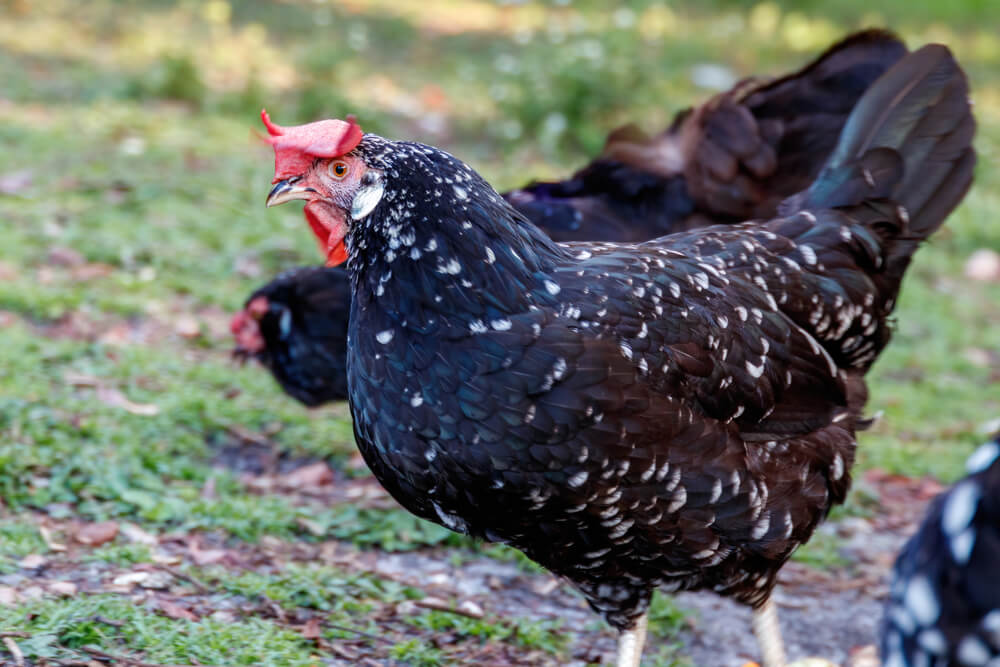The Ultimate Ancona Chicken Breed Guide – Personality, High-Energy, And Delicious Eggs!
Welcome! This article contains affiliate links, meaning I get a commission if you decide to make a purchase through my links, at no extra cost to you.
Say hello to the legendary Ancona chicken breed! It’s Italy’s mottled maverick that refuses to be tamed. This striking black-and-white speckled chicken is the ultimate free spirit of the poultry world. They hail from Italy’s Adriatic coast and combine serious egg-laying prowess with a wild independence. Those traits make Anconas productive, charismatic, and also surprisingly challenging, like feathered rebels who lay lots of eggs.
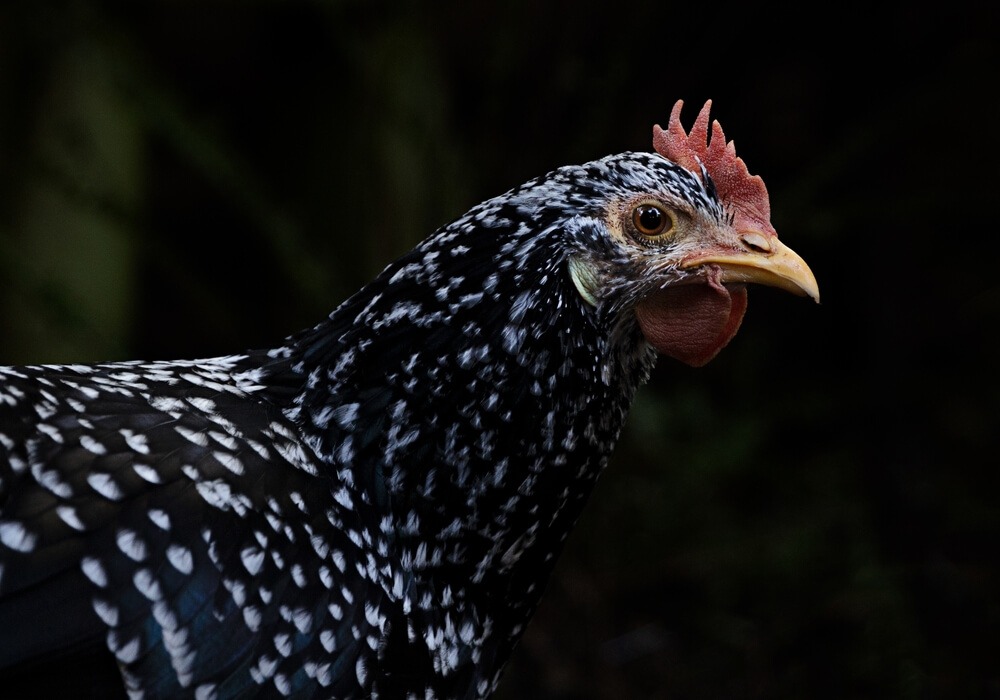
Sound intriguing?
Then, let’s discuss Ancona chickens in more detail!
Ancona Chicken Breed Overview

Ancona chickens are gorgeous Mediterranean birds with striking black-and-white speckled plumage. They also have lively personalities to match their magnificent feather design. Originating in Italy in the 1800s, Anconas were once a global favorite for their exceptional egg-laying and hardiness. They still charm backyard flocks today, even if they’re not as common as they used to be.
| Origin: | Ancona, Italy (1800s). |
| Lifespan: | 6 to 8 years. |
| Cost: | Somewhat rare and expensive. $10 to $15 per chick, $40 to $50 per adult bird. |
| Rooster Weight: | Roughly 6 to 7 pounds. |
| Hen Weight: | About 4.5 to 5.5 pounds. |
| Temperament: | Active, independent, flighty, alert, excellent foragers. |
| Appearance: | Distinctive black plumage with white mottling, red single comb, white earlobes, yellow legs often mottled with black coloring. |
| Uses: | Egg production, ornamental, exhibition. |
| Egg color: | White. |
| Egg production: | Roughly 200 to 220 eggs per year. |
| APA Approved?: | Yes, recognized by the American Poultry Association since 1898 in the Mediterranean class. |
The above table should help you get to know the Ancona chicken breed. But – there’s also plenty more to discover. Consider the following.
Read More – 10 Things All Homesteaders Must Know Before Raising Or Buying Chickens!
Origin And History
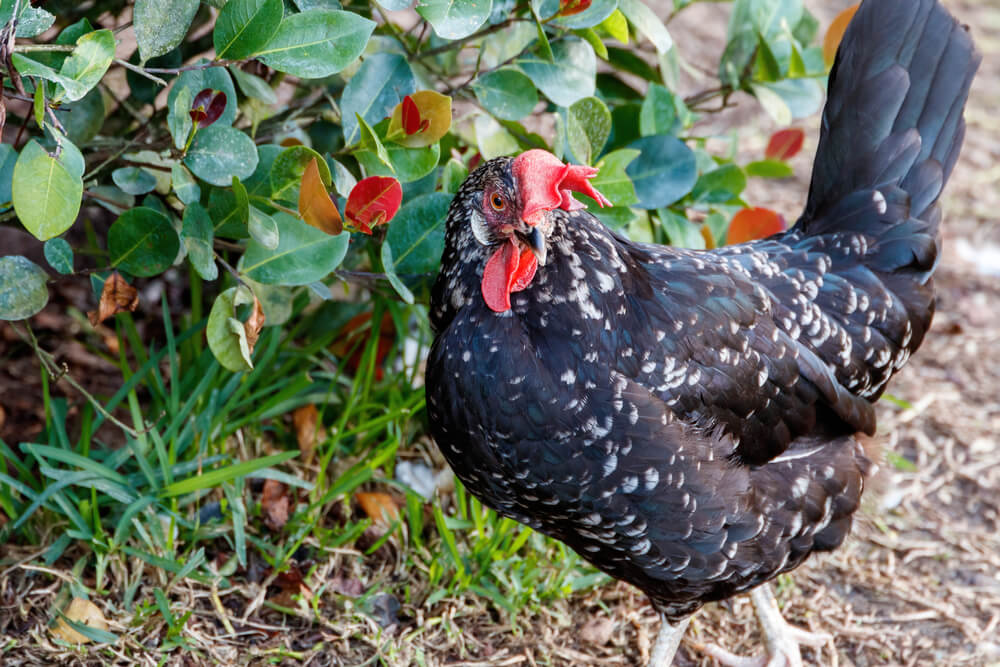
The Ancona’s story begins in the bustling port city of Ancona, nestled along Italy’s Adriatic coast. Local farmers in the 1800s wanted chickens that could handle the Mediterranean climate and keep laying eggs reliably.
These resourceful Italian breeders crossed hardy local stock with other Mediterranean breeds, like Leghorns. The result? A bird that combined the best traits of its ancestors. The Ancona inherited the Leghorn’s prolific laying ability but kept a hardier constitution and more striking appearance.
By the 1850s, Anconas had caught the attention of poultry enthusiasts beyond Italy’s borders. English breeders imported them and began refining the breed further. The English version became slightly larger and more standardized than the original Italian stock.
The breed made its way to America in the 1880s, where it quickly gained popularity among farmers who needed reliable egg production. American breeders focused on improving the distinctive mottled pattern that makes each bird unique. Thanks to the mottling gene, no two Anconas have the same speckled pattern. Each bird has a characteristic appearance.
The American Poultry Association recognized the striking breed in 1898. Their entry helped cement their place in poultry history! During the early 1900s, Anconas were considered one of the premier egg-laying breeds in the United States.
But their prominence didn’t last forever. Eventually, high-performing hybrids and White Leghorns came to dominate the egg industry, leading to the mass decline of Ancona chickens.
Today, Anconas are considered a heritage breed that’s relatively rare compared to modern commercial layers. Their relative rarity today means they can be more expensive than common hatchery breeds like Leghorns and Easter Eggers.
Read More – The Ultimate Dominique Chicken Breed Guide – Cost, Uses, Origin, And Lifespan!
What Are Ancona Chickens Used For?
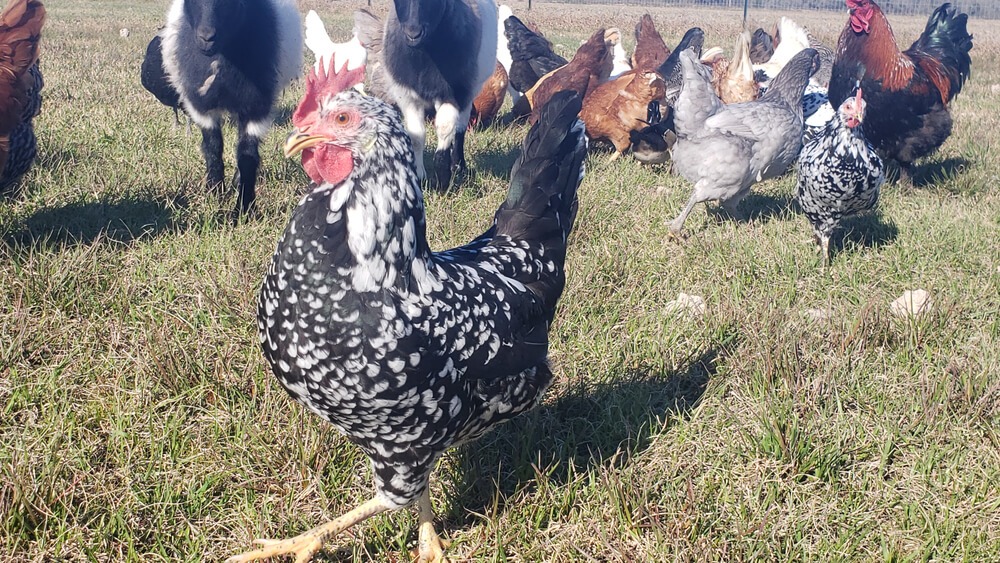
Ancona chickens are high-energy egg-laying machines, ideal for busy backyard flocks. Small farms and egg lovers can’t get enough of them!
These birds produce a steady stream of delicious white eggs with rich, flavorful yolks that make breakfast worth getting up for. Farmyard bakers and homestead chefs prize their eggs for both their taste and consistency.
Chicken keepers also love Anconas for their self-sufficient streak.
These birds don’t need babysitting. They thrive with minimal fuss, especially in free-range settings, thanks to their alert nature and strong survival instincts.
Their independence makes them perfect for busy families or anyone who wants productive chickens without constant upkeep.
Anconas are also superb foraging experts. They hungrily scour every inch of your yard like feathered detectives. They eagerly hunt down bugs, ticks, seeds, and greens. Free-range and pasture-based operations particularly value this trait, as Anconas excel in low-intervention systems.
Temperament
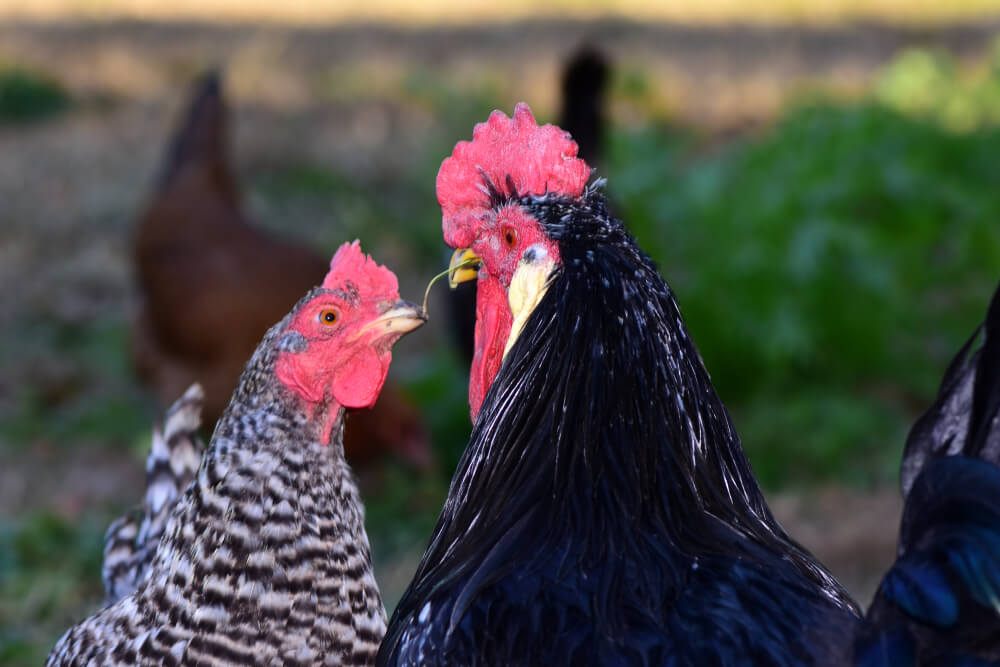
Here’s the catch. These birds are about as cuddly as a porcupine! Anconas maintain their wild Mediterranean spirit and prefer to keep their distance from humans. Don’t expect lap chickens or birds that come running when you call.
They’re polite enough. But not particularly friendly. Their flighty nature can be a real challenge for beginners. Anconas can also fly surprisingly well for chickens and will take to the air at the first sign of trouble. Their flightiness means you’ll need secure fencing of at least 6 feet high. And even that might not keep them in!
Be prepared for the occasional chicken roundup. These escape artists are notorious for slipping through enclosures that would easily contain other breeds.
Despite their independent streak, Anconas make excellent additions to mixed flocks where their alertness helps protect more docile breeds from predators.
Read More – How To Keep Hungry Foxes Away From Your Hens, Chickens, Coop, And Roosters!
Health And Lifespan
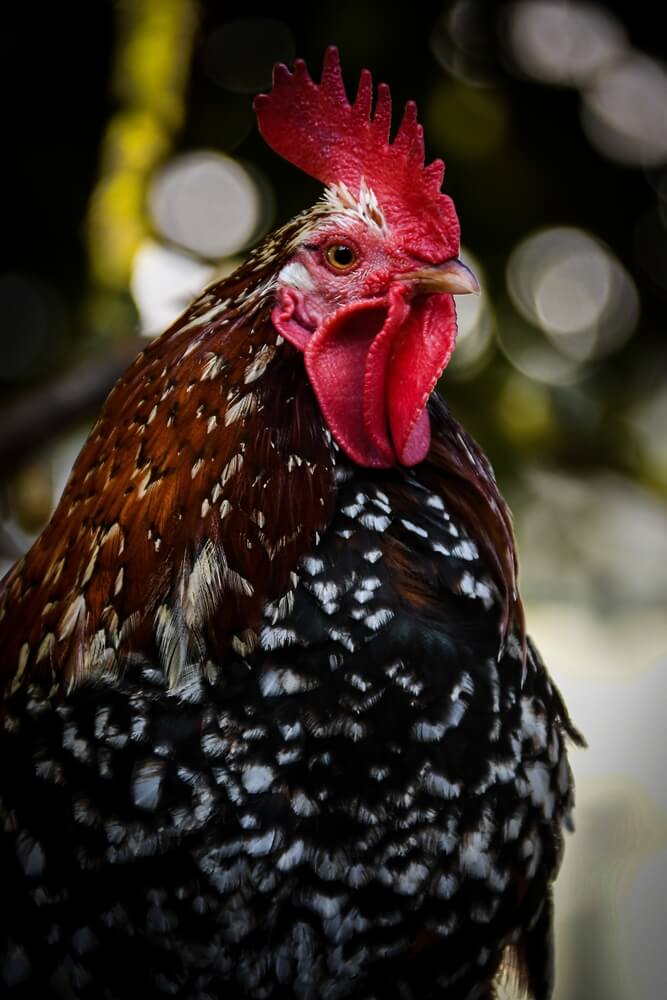
Anconas are remarkably hardy birds that typically live 6 to 8 years with proper care. Their Mediterranean genetics give them excellent resistance to common poultry diseases and parasites.
However, their flighty nature can lead to injuries from crashes, escapes, falls, and other incidents. Anconas are also prone to bumblefoot if they land hard on rough surfaces repeatedly.
Cold weather can stress Anconas since they evolved in warmer climates. Their large single combs are susceptible to frostbite in harsh winters. If you raise Ancona chickens in a chilly environment, ensure to offer them windbreaks and a clean, dry coop floor!
Regular health checks should focus on their feet and legs. Ancona chickens can easily develop cuts and scrapes from their constant movement. Their excellent foraging skills help maintain their health by providing diverse nutrition and keeping them physically fit.
Food And Water

Anconas are enthusiastic eaters who love hunting down protein-rich treats. They go crazy for earthworms, grubs, grasshoppers, and any creepy crawly they can find. These birds are particularly fond of scratch grains like cracked corn and sunflower seeds, which they’ll scratch and hunt for hours.
A standard laying hen needs about a quarter pound (4 ounces) of quality layer feed containing around 18% protein daily. But Anconas might eat slightly less due to their excellent foraging abilities.
In summer, free-range Anconas with access to good pasture might only consume 2 to 3 ounces of commercial feed since they can forage for much of their nutritional needs.
They devour kitchen scraps like lettuce, tomatoes, and melon rinds. Anconas show particular enthusiasm for berries, apples, and any fallen fruit. They’re also skilled at catching flying insects, making them valuable for natural pest control.
The Ancona’s high activity level means they benefit from higher protein content during the molt and laying season. They also need constant water access, especially since they’re more active than many other birds.
Read More – Our 10 Top Tips For Raising Happy Hens, Chickens, And Roosters!
Appearance And Colors
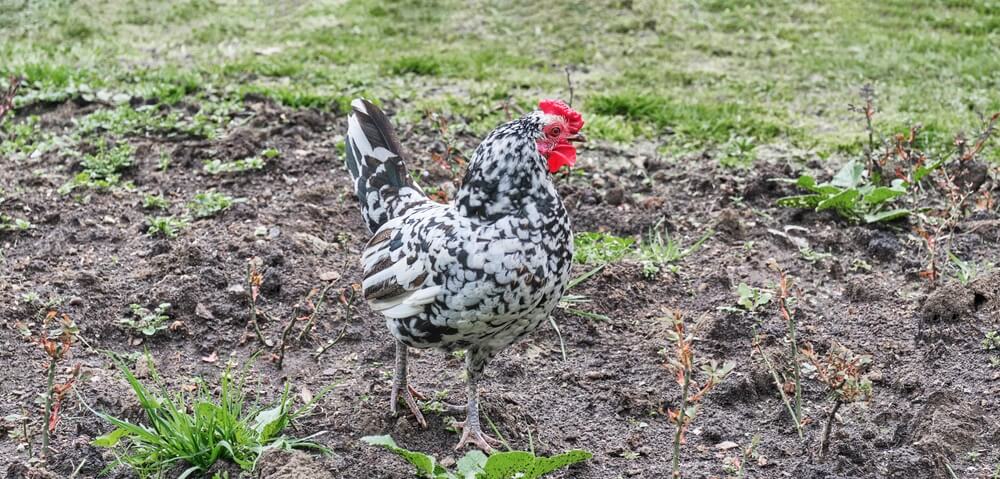
Anconas are striking, medium-sized birds with a distinctive mottled pattern that’s their trademark feature. Most birds display unique black and white speckling that resembles scattered paint drops on a dark canvas. The base color is lustrous black with irregular white spots and tips scattered randomly across their feathers.
Their heads feature bright red combs, most commonly large single combs, though rose combs also exist, especially in cold-climate lines. Prominent white earlobes contrast beautifully with their dark plumage. Their eyes are often reddish-bay to dark brown. These striking eyes give them an alert, intelligent expression.
They have yellow legs and feet (sometimes black-mottled) with four toes per foot. Their bodies are compact and well-proportioned, built for activity rather than bulk. Roosters display the classic upright carriage with flowing tail feathers, while hens have a more streamlined appearance.
The mottling pattern becomes more pronounced with age, and each molt can shift the distribution of white markings. Some birds show heavier mottling while others display more subtle speckling. This genetic variation, driven by the mottling gene, means no two Anconas look identical.
Their feathers have a tight, close-fitting quality that helps shed water and maintains their sleek appearance. The contrast between their dark base color and bright white markings creates a sophisticated, almost formal appearance that makes them stand out among birds in any flock.
(One final note is that most American and UK variants are prominently black with white mottling. But, some Italian Anconas are primarily white. So, there’s a diverse mixture of white and black designs!)
Our Ballad To The Ancona Breed

From Italy’s coast where salt winds blow, the Ancona’s story starts to grow. With a mottled dress of black and white, they dance and dart in fading light.
Like scattered stars across the night, each pattern unique, a wondrous sight. Not just for eggs they proudly lay, but their wild hearts that won’t obey.
Behold! This restless flock rules the range when morning breaks with colors strange. Their flighty ways and fearless stride bring farmers both joy and pride.
Their hardy spirit can’t be tamed in barnyard bounds or chickens named. Indeed – these feathered friends with hearts so bold are more precious than finest gold.
The Ancona chicken, wild and free, brings elite heritage from Italy. Their legacy soars with each new day, as untamed friends here to stay.
Read More – Our 21 Top Egg-Laying Chicken Breeds For Any Backyard Flock | The Ultimate Guide!
Conclusion
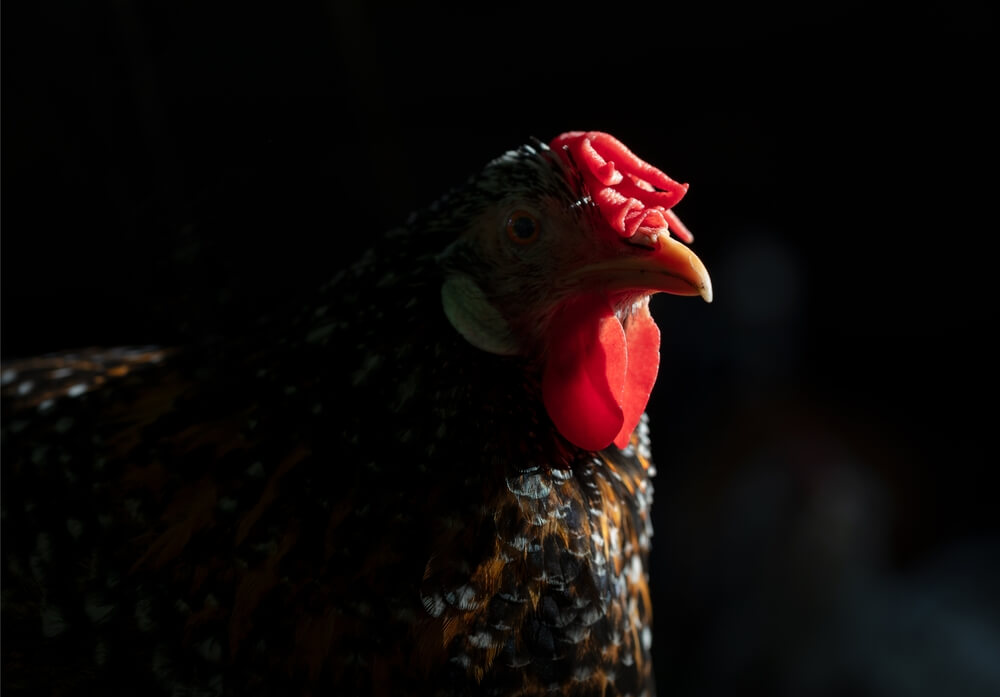
The Ancona isn’t your average backyard chicken. These Italian originals bring old-world charm, exceptional egg production, and a fierce independence that commands respect. Sure, they won’t cuddle on your lap. But they’ll reward your patience with delicious eggs, charisma, personality, and endless entertainment.
What about you?
- Have you ever seen an Ancona chicken in real life? Was it more white or black?
- Will you add some Ancona chickens to your flock?
- Do you agree that these chickens are somewhat flighty, but also charming and worth raising?
Thanks for reading.
Have a great day!

